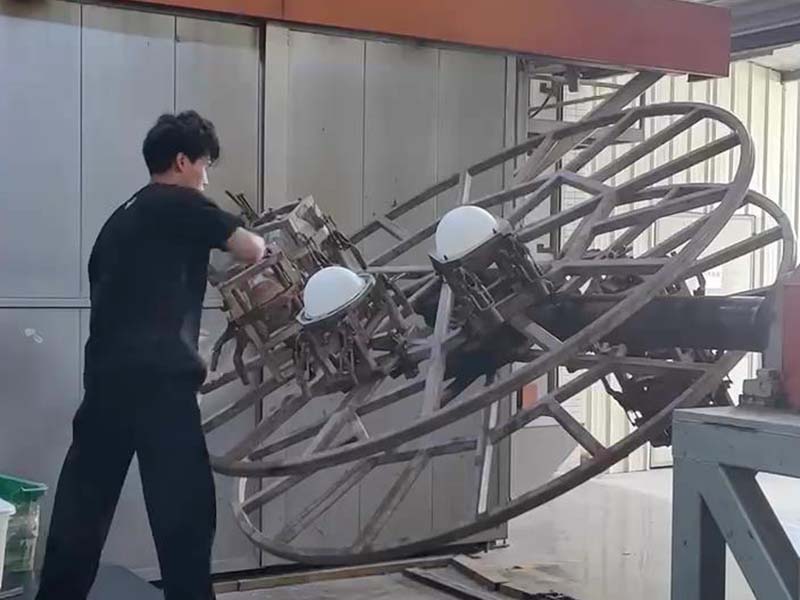How to Optimize the Demolding Stage in Rotational Molding Process
 May 31,2024
May 31,2024

How to Optimize the Demolding Stage in Rotational Molding Process
Demolding is a critical step in the rotational molding process, as it involves removing the rotational molding product from the mold without damaging either the mold or the part. To optimize the demolding process and achieve high-quality rotational molding products with minimal defects and maximum efficiency, several key strategies can be implemented.

1. Mold Design Optimization
Design molds with smooth, easy-release surfaces to reduce friction and prevent damage to the molded part during demolding. Use properly sized and positioned draft angles to facilitate easy ejection of the part from the mold. Ensure proper venting in the mold to remove gas pockets that can cause sticking during demolding.
2. Mold Materials Selection
Choose molds made from materials that can withstand the heat and chemicals used in rotational molding without degrading over time. Some mold materials may require additional treatments or coatings to improve release properties.
3. Process Control
Maintaining the correct mold temperature during cooling is crucial. If the mold cools too quickly, it may lead to a product that is difficult to remove without damage. Conversely, slow cooling can increase cycle time and affect productivity.
4. Demolding Techniques
Proper training of operators is crucial in optimizing the demolding phase. Operators should be trained on how to handle the part during demolding to avoid damaging it or causing injury to themselves. They should also be taught how to use any demolding aids correctly and efficiently. Use demolding tools or robots to minimize manual handling and reduce the risk of injury or part damage.
5. Maintenance and Inspection
Regular maintenance of both the mold and machinery used for rotational molding is essential for optimizing the demolding phase. Any wear and tear on the mold or machinery can cause difficulties during demolding, leading to increased downtime and potential damage to the part. Therefore, regular inspections and repairs should be carried out to ensure that everything is functioning correctly.
6. Use of Release Agents
Applying an appropriate release agent before molding is essential to ensure that the rotational molding products can be easily separated from the mold after cooling. The selection of release agents depends on the type of plastic being used and the complexity of the mold design
7. Post-Demolding Handling
Removal of excess material (flash) that forms where the two halves of the mold meet is often necessary. Automated trimming machines can efficiently remove flash without compromising the product's integrity. Placing the demolded parts in a conditioning room helps stabilize their shape and size, especially important for thicker parts that may experience post-demolding shrinkage.
8. Troubleshooting
- Sticking Issues
If a part sticks to the mold, it could be due to an insufficient or uneven application of release agent, incorrect cooling rates, or damage to the mold surface. Troubleshooting these issues requires identifying the root cause and adjusting the relevant parameters.
-Part Damage
Parts can get damaged during demolding if excessive force is used or if the part is removed unevenly. Proper training of operators and the use of appropriate tools and techniques are essential to mitigate this risk.
9. Continuous Improvement
Monitor the demolding process closely and gather data on any issues that arise, such as part defects or mold wear. Use this data to make continuous improvements to the process, mold design, and operator techniques.
By following these steps, it can significantly optimize the demolding phase in rotational molding to improve both the quality of rotational molding products and the efficiency of rotational molding manufacturing process.
 Tel: 0086-13632687993
Tel: 0086-13632687993  Email: roto@lightvenus.com
Email: roto@lightvenus.com

 Home
Home Why Do We Need Vent Holes in Rotational Molding Molds
Why Do We Need Vent Holes in Rotational Molding Molds  You May Also Like
You May Also Like



 Tel
Tel
 Email
Email
 Address
Address








